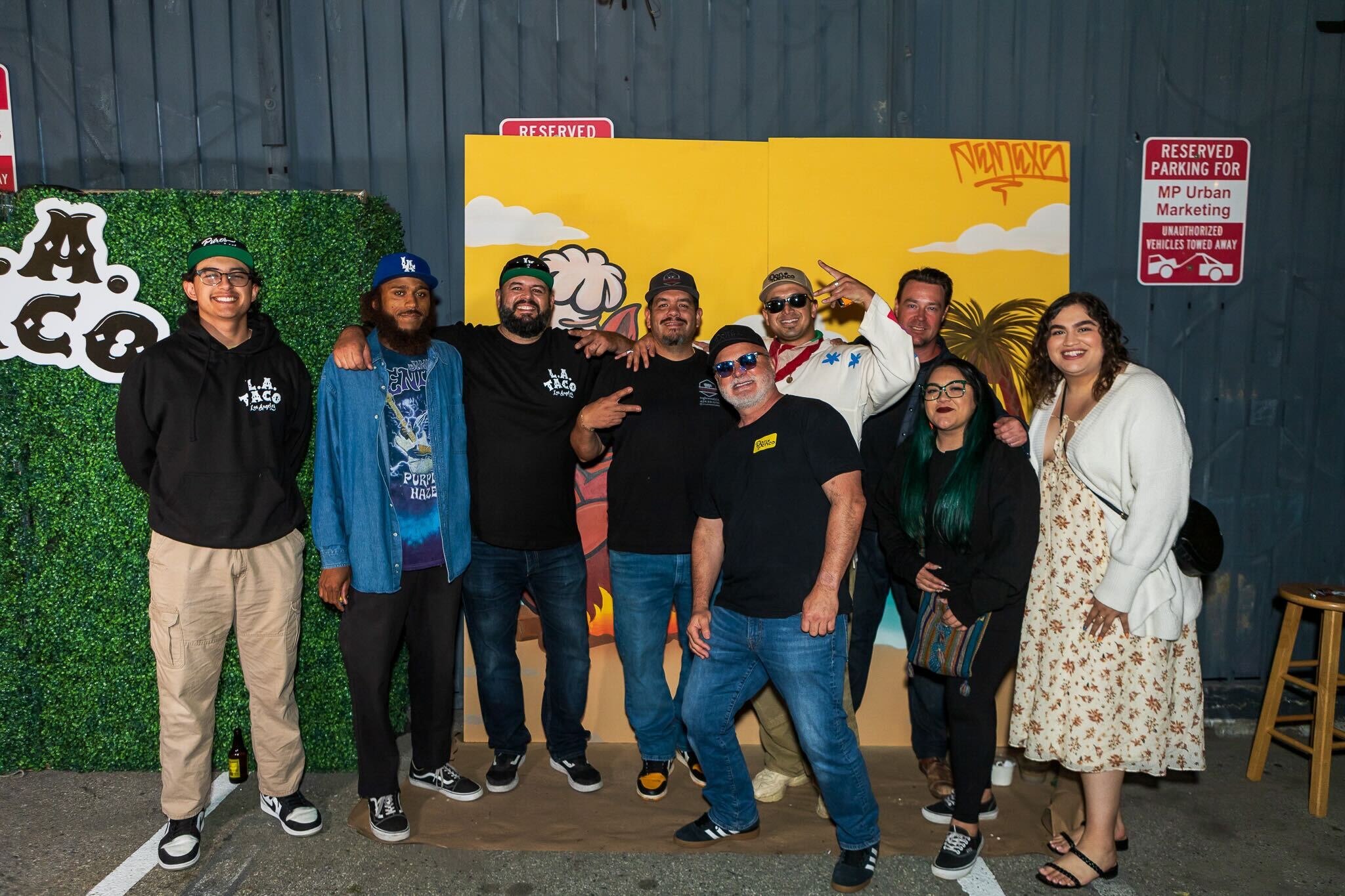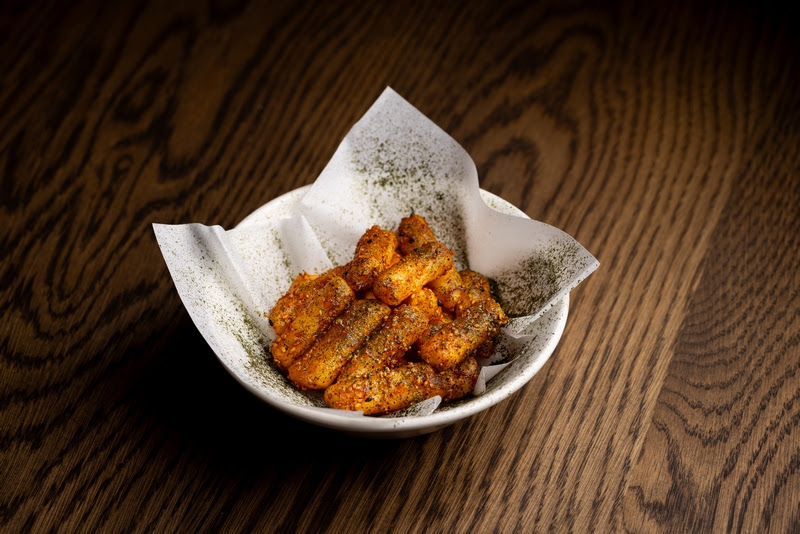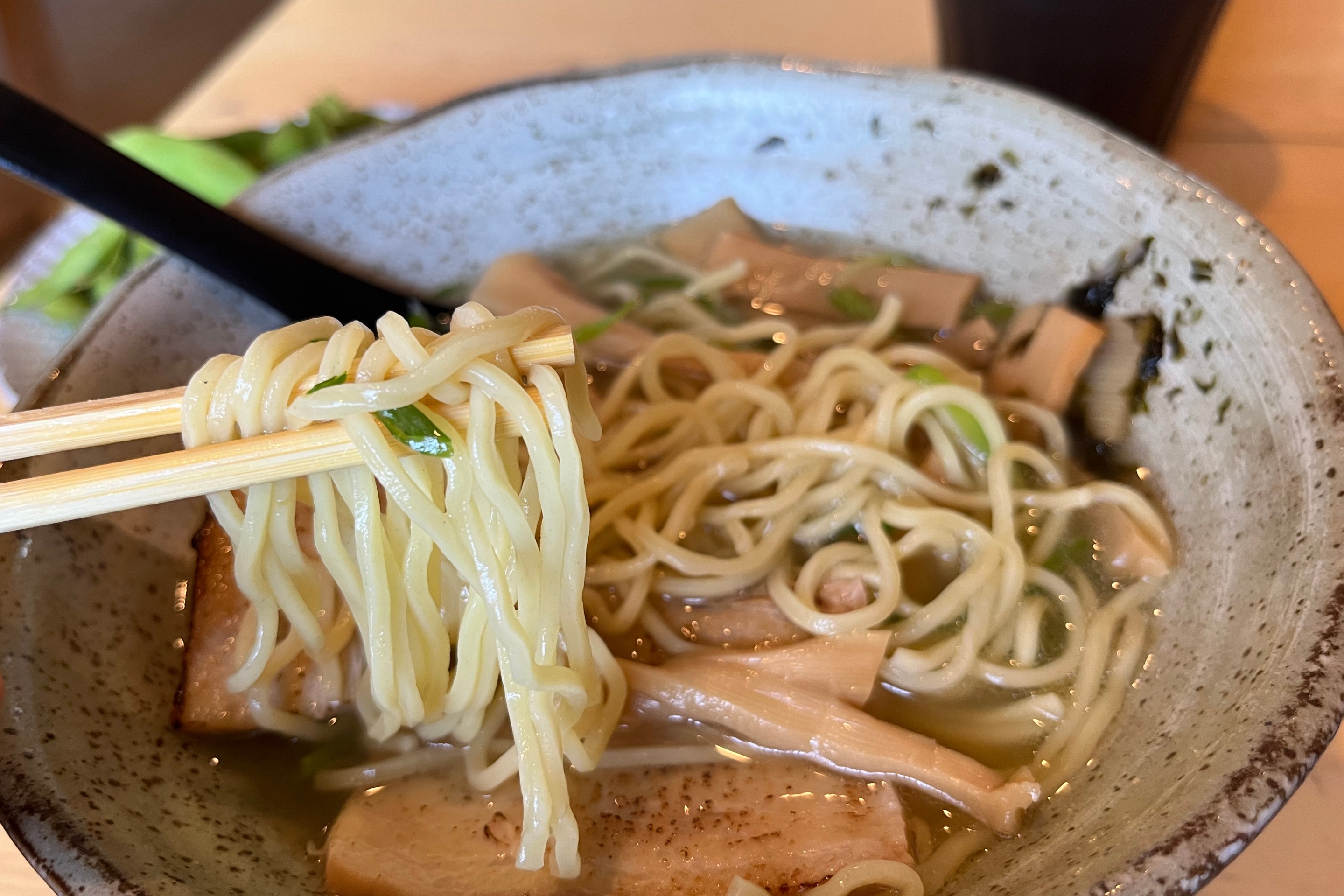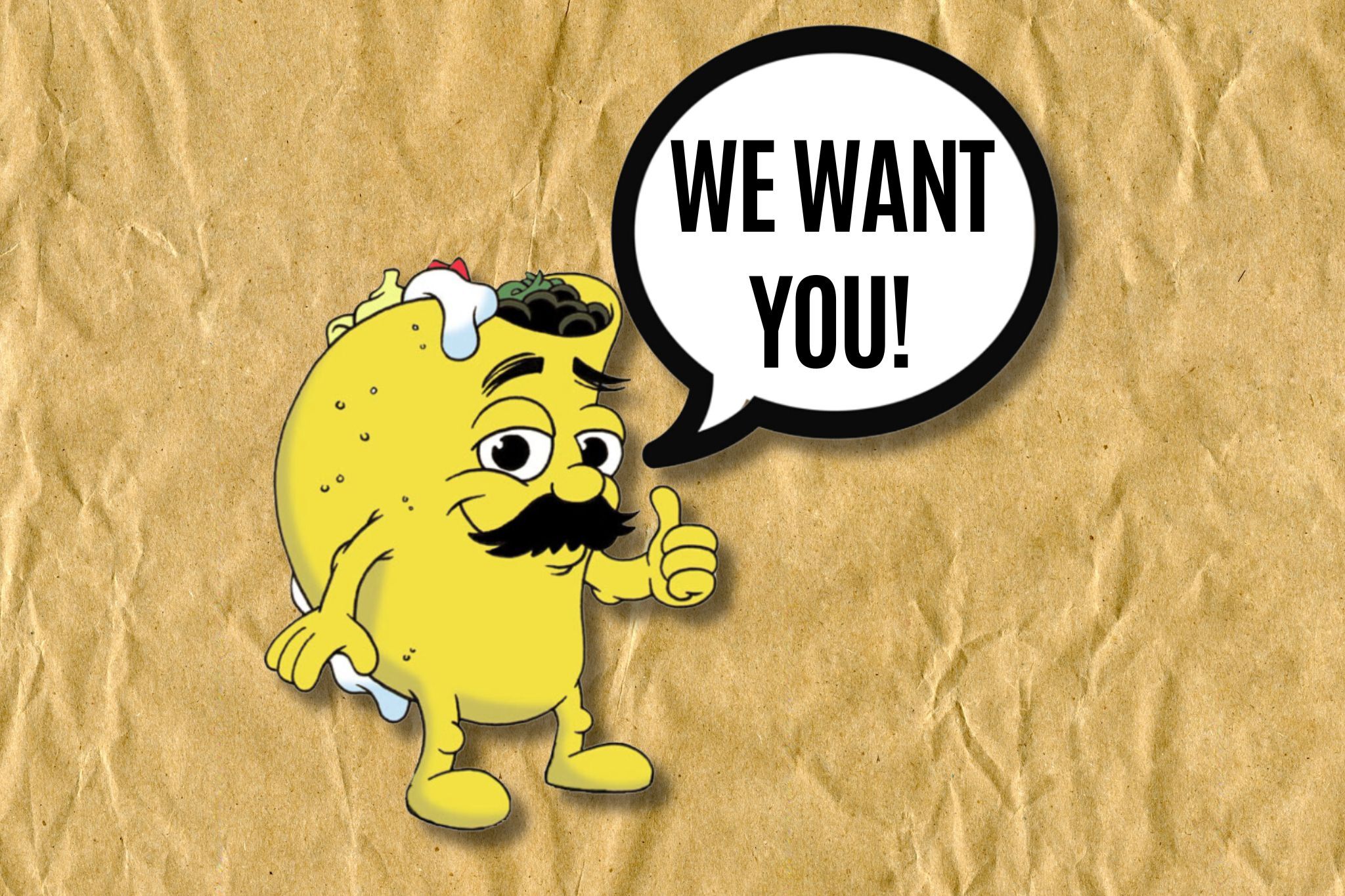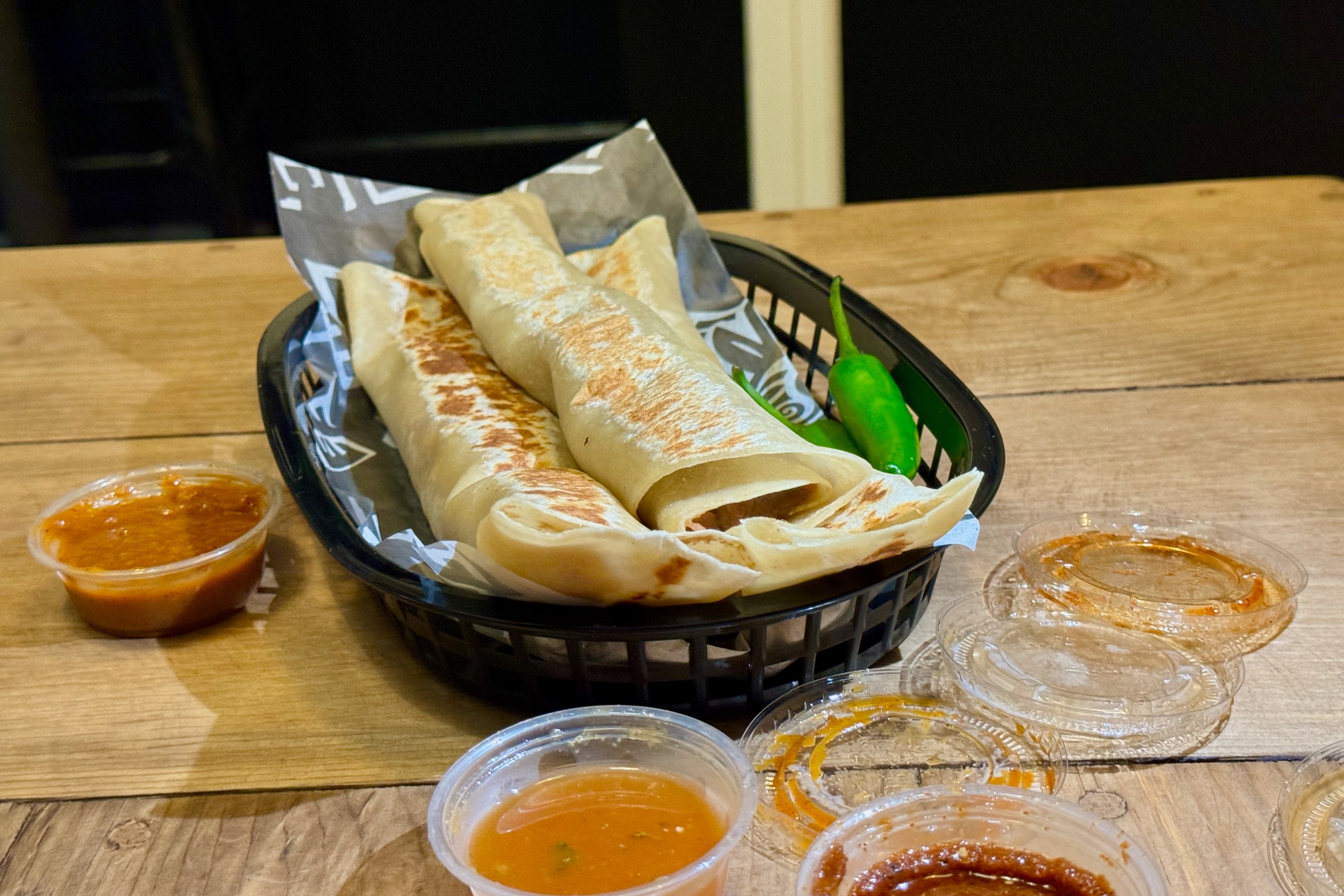The 37 Best Books About Los Angeles Culture (and Beyond) Published In 2023
Books change lives when they are read wholeheartedly and must be shared. This collection covers everything from L.A. noir to sci-fi to identity and poetry. Read, gift, and get inspired.
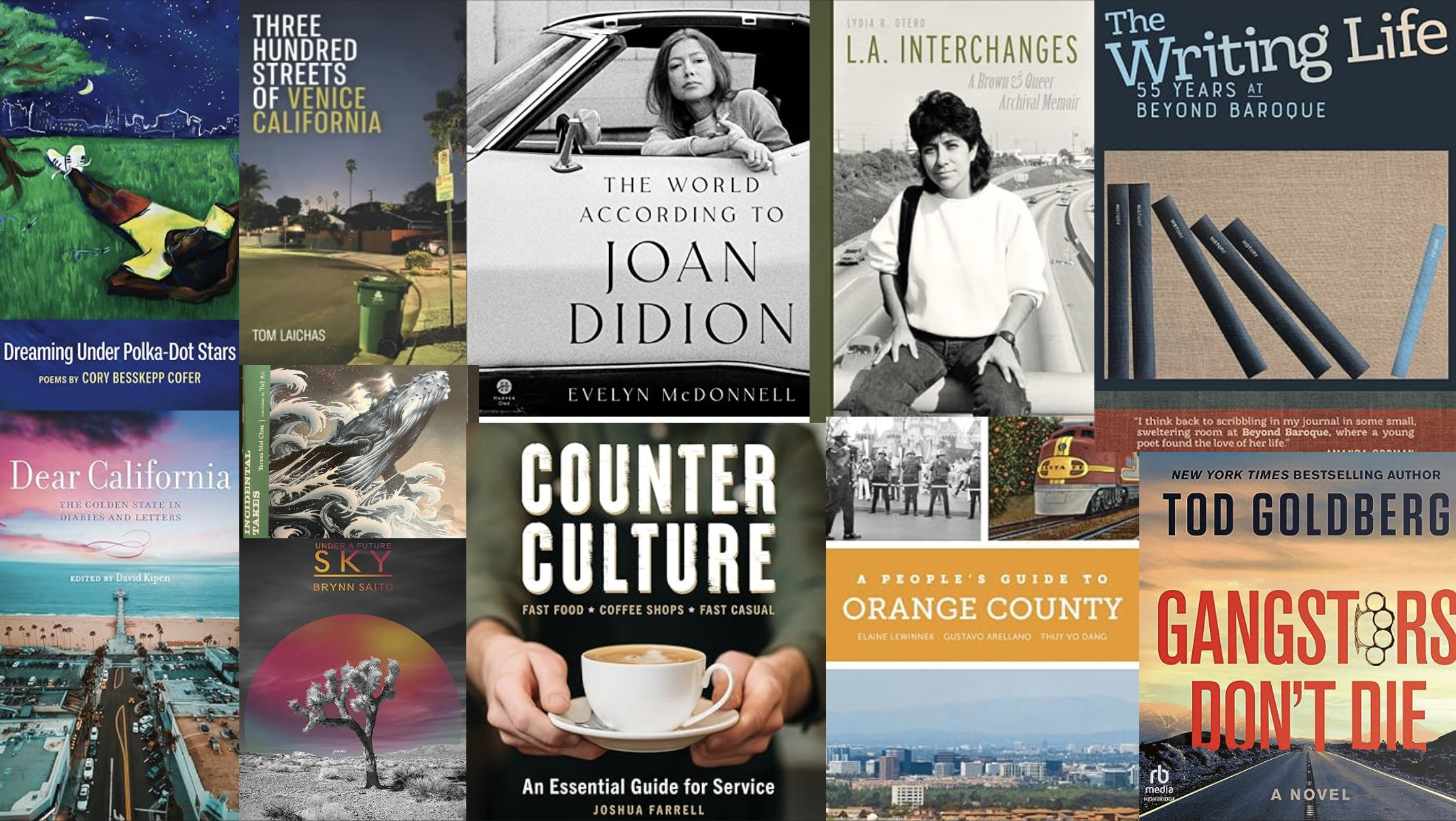
As of December 17th, I finished 111 books in 2023.
I sleep surrounded by books. I am always reading. Besides my wife, kids, and my city, books are everything to me.
I read widely across genres, though I especially focus on Los Angeles, architecture, crime fiction, music, and poetry. But this list also includes books about California, the Southwest, hip hop, urban studies, deep ecology, and ethnomusicology, along with some unexpected selections.
This is my 4th time creating an annual book list for L.A. TACO.
Here are the first three: 2020, 2021, 2022.
As someone who has spent the better part of the last two decades reciting poetry in bookstores, galleries, museums, and cultural centers, my book list includes titles from both indie publishers and major houses. Some of these writers are famous, others might be one day, and a few you might even see rocking a local coffeehouse.
Almost all of these books were released in 2023, with the exception of a few from late 2022. Books change lives when they are read wholeheartedly and must be shared. So, this list includes as many titles as I could fit in one place. There are two writers on this list who have two books each: Terrance Hayes and Jack Skelley.
Before jumping in, I want to dedicate this annual book list to Mike Davis and Amy Uyematsu, two of my mentors who passed away over the last year. For those who do not know, they are two prolific L.A. author-teachers. Both of them gave me big boxes of books over the years. In August of 2020, Uyematsu gave me two boxes of mostly poetry books, including rare titles by Janice Mirikitani and Langston Hughes. Uyematsu was a pioneering, Pasadena-born Asian American poet who seamlessly merged the personal and the political. I knew her for over 15 years, and she was as kind as she was brilliant. She wrote six poetry books over 30 years. I wrote about her last one, That Blue Trickster Time, in the L.A. TACO list last year and also here.
Mike Davis needs no introduction for anyone familiar with LA letters. What’s less known is how generous he was. He gave me a couple of boxes of books on more than one occasion, including Carey McWilliams and Kevin Starr titles.
First, when he retired from UC Riverside in 2015 and then another time at his house in San Diego in 2018. Aside from being a fierce social historian, he was gracious. Davis gave me well over 100 books in the 25 years I knew him. He was my professor at UCLA in 1997, teaching me terms like atmospheric river, fire ecology, and fortress architecture, expanding my vocabulary in the same way Chick Hearn and Vin Scully did before him.
I wrote a 3,000-word essay about Davis in the just-published 2nd edition of my book, Letters To My City. The book’s essays and poems celebrate dozens of L.A. neighborhoods while honoring giants like Davis and Uyematsu. With their incredible writing and generous spirits, Davis and Uyematsu showed me how to be a literary citizen sharing books and wisdom. I do my best to continue their ethos with my own students. This book list is dedicated to Davis and Uyematsu.
There are 37 books here listed alphabetically by author. If I had more time, I’d list more.
Let’s dive in...

Spoken Word: A Cultural History ~ By Joshua Bennett
In 2009, Joshua Bennett was invited to perform a poem at the White House for the Obamas at a big event where Lin-Manuel Miranda and Esperanza Spaulding also performed. Bennett was only 20 at the time, a senior in college and a poetry slam champion. 15 years later, Bennett now has a PhD. and works as a Professor at Dartmouth. Bennett considers the East Coast roots of spoken word and how oral poetry is actually the first literary form even before the printed word. He covers and unpacks seminal names like Miguel Algarín, Ntozake Shange, Miguel Piñero, Patricia Smith, and Saul Williams. The book is an autoethnography of Bennett’s own history as a poet and a 50-year narrative history that traces the Black Arts Movement, the birth of the Nuyorican Poets Cafe, the rise of the poetry slam in Chicago at the Get Me High Lounge to Def Poetry Jam, inaugural poet Amanda Gorman, and the bridge between hip-hop and spoken word.
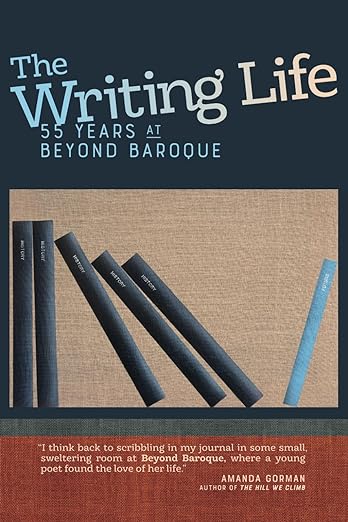
The Writing Life: 55 Years at Beyond Baroque Edited ~ By Laurel Ann Bogen & Liz Camfiord
The Venice-based Beyond Baroque Literary Arts Center is the oldest poetry venue in Los Angeles. It’s been so influential that both the punk band X and Amanda Gorman can brag that they started there, though about 30 years apart. Founded by George Drury Smith in 1968, Beyond Baroque emerged from the 1950s Venice Beat movement to evolve into one of America’s premier literary arts venues. This book is a history of the space with contributions from over 50 scribes while honoring literary giants like Wanda Coleman and Scott Wannberg. Peter J. Harris declares that Beyond Baroque is “sacred ground on which we can ponder.”
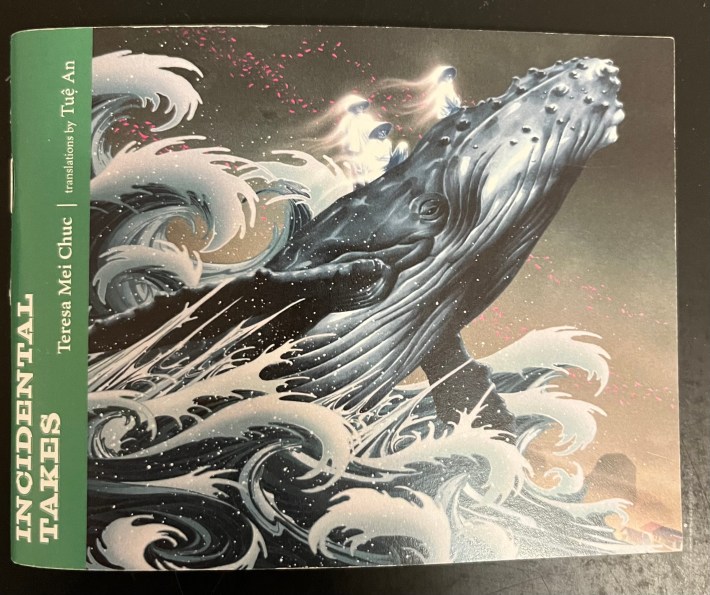
Incidental Takes ~ By Tuệ Mỹ Chúc aka Teresa Mei Chuc
Teresa Mei Chuc’s book of eco-poems presents pieces in both English and Vietnamese. One of the book’s shortest poems, “A Lesson on Interbeing,” captures the book’s central idea. Here it is in its entirety: “Thích Nhất Hạnh says that when I eat an orange, / I could taste the clouds, the rain, the sunshine, / my late grandmother’s love when she planted this tree nearly half a century ago. / Hear her voice conversing with leaves. / Feel the fluttering wings of bees covered / in pollen and see the iridescent hummingbird / that visits daily drunk on the nectar /of orange blossoms.” Mei Chuc paints aquatic ecosystems, Vietnamese villages, whale bones, and Buddhist temples, reminding us that we are all connected. The book’s title comes from the hundreds of whales and dolphins killed by the U.S. military annually, classified as “incidental takes.”
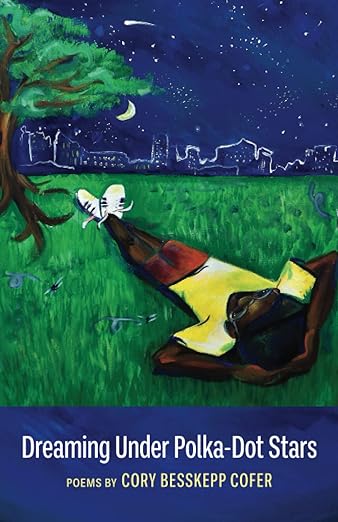
Dreaming Under Polka-Dot Stars By Cory Cofer
Published by World Stage Press, this is the long-awaited debut book of poetry from Cory Cofer, aka Besskepp. You may know Cofer from A Mic & Dim Lights, the open mic he started in Pomona 23 years ago. As a poet, educator, husband, father, and community ambassador, the HBO Def Poet makes the personal universal with Polka-Dot Stars. Cofer takes us from Trinidad, Texas to Stockton to the Inland Empire with candid poems that make you wanna join in call and response. His poetry removes the mask and finds time to laugh about the incongruities. Cofer owns his own story by being vulnerable---then laughing his way through it.
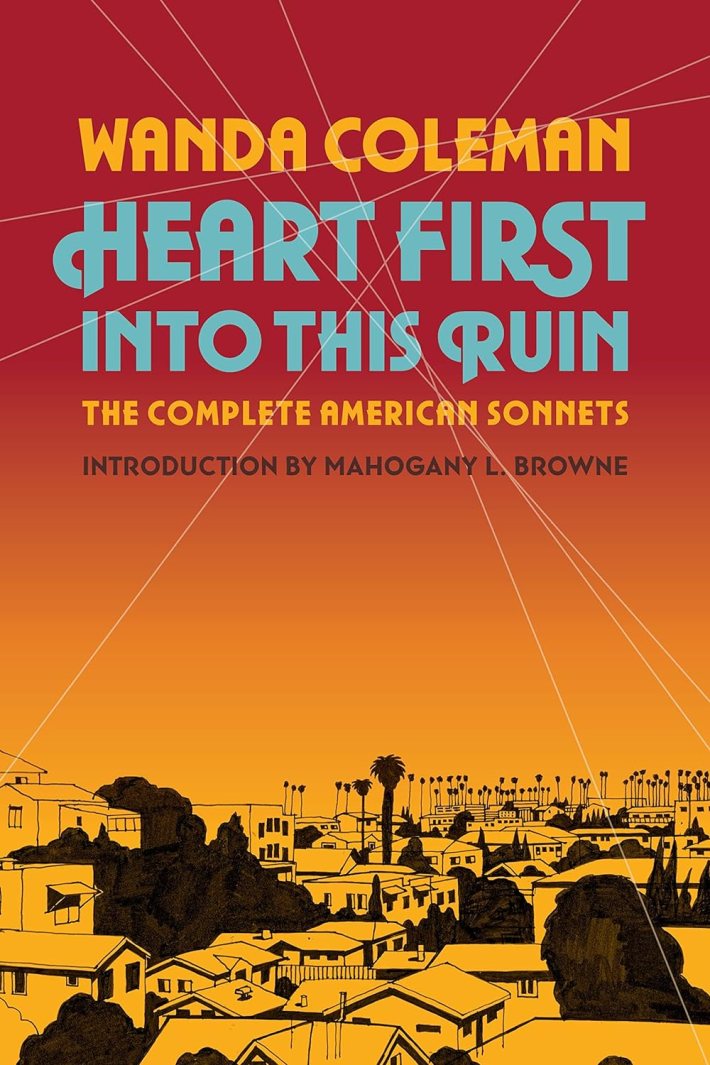
Heart First Into This Ruin: The Complete American Sonnets ~ By Wanda Coleman
Though Coleman passed in 2013, her legacy looms larger than ever. As the author of over 20 books, she probably wrote more poems about LA than just about anybody with the possible exception of Charles Bukowski. This new collection is the first time all of her American Sonnets are all grouped together in one book. Coleman took the traditional sonnet form and reinvented it with more music for the postmodern. Her American sonnets are irreverent and honest and zip straight to the heart. “Here’s to / my uncompromising vision,” Coleman writes, “and to the young blood who / tells me I carry the broom like a cross.”

Counter Culture ~ By Joshua Farrell
This unique book is a hospitality guide that spotlights the importance of connecting with people and thoughtful guest service, especially in restaurants, coffeehouses, wine bars, and other small businesses. Quick-hit essays, professional advice, and mini oral histories with celebrated Angeleno chefs are sprinkled throughout the text. “This industry,” the author writes, “is built on our ability to share our skills, teach each other, and learn from each other.” Equally a how-to-guide and glossary of local culinary culture, there’s a lot of wisdom here.
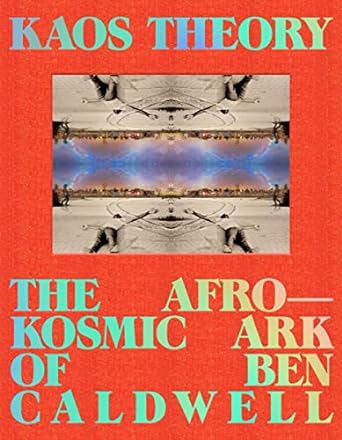
Kaos Theory: The Afrokosmic Ark of Ben Caldwell ~ By Robeson Taj Frazier w/ Ben Caldwell
The filmmaker, educator, and community activist Ben Caldwell has long been one of Los Angeles’s most important community artists. Based in Leimert Park, Caldwell’s long career has centered around fellowship, community and using film and music as a social force. Whether he was teaching at CalArts, teaching youth in the Crenshaw district how to use computers and cameras, making films as a part of the Los Angeles Rebellion Film Movement, or providing a space for 25 plus years for the Project Blowed hip hop open mic, Caldwell and his KAOS Network space in Leimert has been integral to our city’s cultural landscape. This book uses vivid illustrations, photographs, and countless stories to show Caldwell’s 50-plus years of cultural work.
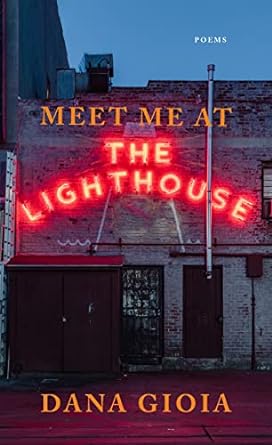
Meet Me at the Lighthouse ~ By Dana Gioia
“You don’t fall in love with Los Angeles / Until you’ve seen it from a distance after dark,” asserts Dana Gioia. The former California Poet Laureate laments about the Los Angeles he came up in the 60s and 70s while interrogating our city’s state in 2023. Raised in Hawthorne before studying at Stanford and Harvard and living in New York City for 15 years, Gioia now splits his time between LA and Northern California. The 26 poems here take us to the Lighthouse nightclub at Hermosa Beach, high into the Hollywood Hills and over to Olvera Street where the poet tells us: “Pray for the city that lost its name. / Pray for the people too humble for progress. / Pray for the flesh that pays for profit. / Pray for the angels kept from their queen.”
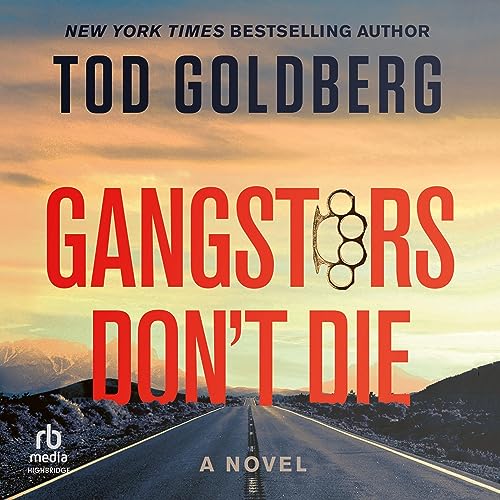
Gangsters Don’t Die ~ By Tod Goldberg
The final book in Goldberg’s "Gangsterland" trilogy moves between Chicago, Las Vegas, Palm Springs, and Los Angeles following the protagonist, the hitman turned rabbi, Sal Cupertine. The twists, turns and reversals are never-ending and the dialogue is off the hook. Goldberg is gifted in using artful F bombs and his candid observations through the narrative almost come off like Samuel Jackson: “Palm Springs was an open city, which to the Italian families meant you could do whatever you wanted provided you didn’t kill anybody or fuck them over too badly. In either case, any revenge on that shit would happen outside the city limits.”
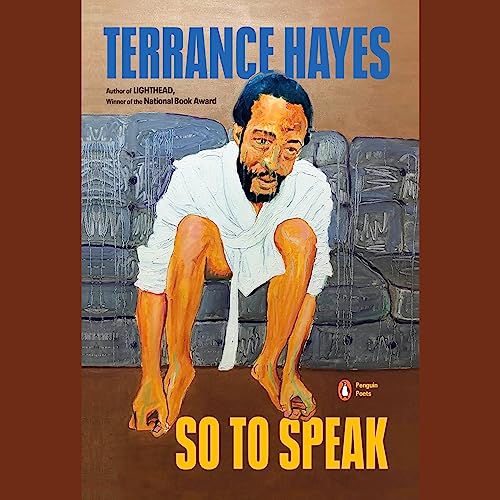
So to Speak & Watch Your Language ~ By Terrance Hayes
Releasing two books on the same day is par for the course for the award-winning poet and NYU professor Terrance Hayes. So to Speak is his seventh poetry collection, and as usual Hayes flexes inventive poetry forms like the golden shovel, American sonnets and even ekphrastic do-it-yourself sestinas. A master of disrupting poetic form in order to make a new one, only Hayes could write poems bridging Bob Ross, Lil Wayne, Kafka, and Marvin Gaye. Watch Your Language is Hayes’s second prose collection. Inspired by Toni Morrison’s Playing in the Dark, it functions like a poetic guidebook, charting a lyrical geography featuring illustrated micro-essays, biographical prose poems, and graphic book reviews accompanied by his own original drawings. He even asks 255 questions, for example: “Which matters most: the poem, the poet, or the state of poetry?” There are also tributes to mythical, lesser-known poets like Frank Stanford and Joel Dias-Porter, aka DJ Renegade. Hayes’s tribute to Renegade is so compelling I just picked up Renegade’s book Ideas of Improvisation.
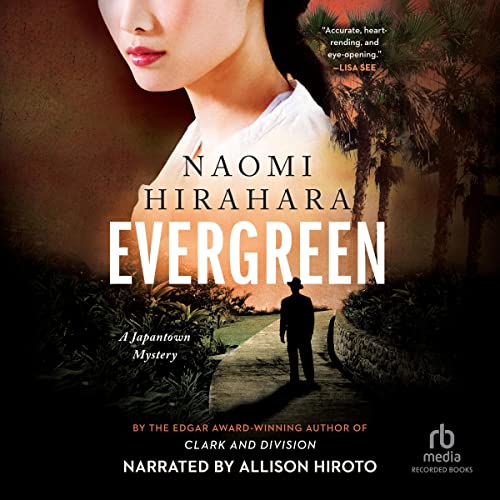
Evergreen ~ By Naomi Hirahara
This crime novel takes place in Boyle Heights and Little Tokyo in 1946, just after World War II ended, as Japanese Americans are returning to Los Angeles after being in the wartime concentration camps or fighting with the 442nd Battalion’s Go For Broke unit. A sequel to her award-winning last book, Clark and Division, which was set in wartime Chicago, this novel addresses the Great Migration, Bronzeville, jazz history, and Boyle Heights' multiethnic landscape. Hirahara is a master of using real people and real events in her fiction, like the historic Japanese Hospital on East First Street, the Breed Street Shul and the Rafu Shimpo newspaper. Equally, a love story and murder mystery, the protagonist, Aki Ito, encounters discrimination from the law and unexpected visits from the mafia. Evergreen is a riveting narrative tackling race relations, the American Dream, and the sacredness of family.
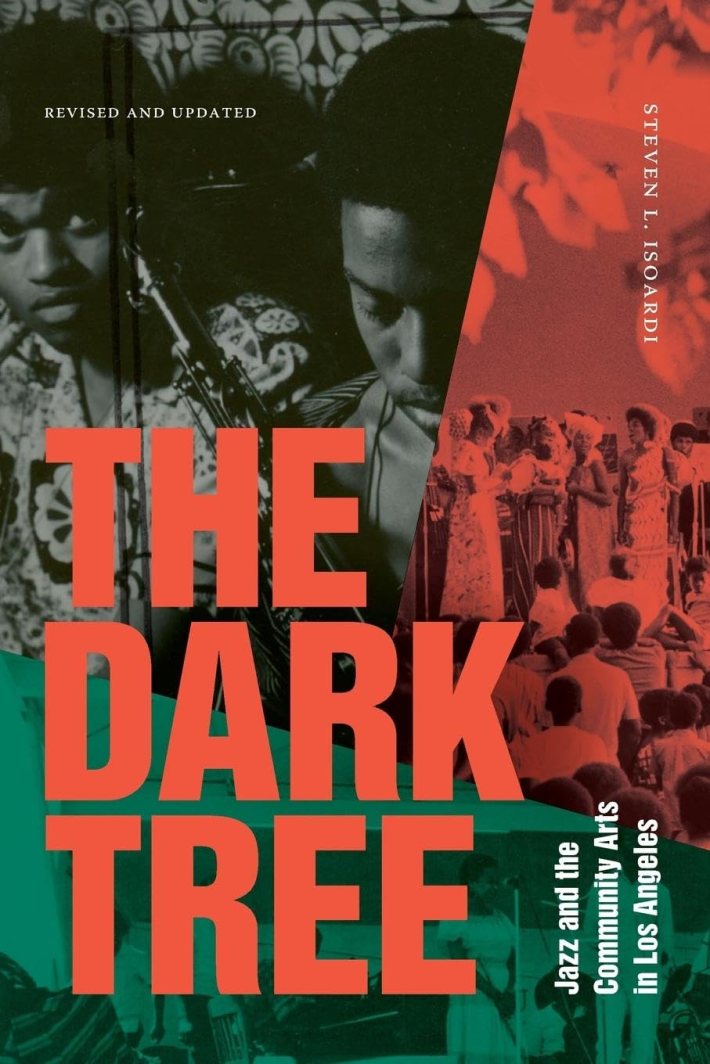
The Dark Tree ~ By Steven Isoardi
In 1961, the pianist and conductor Horace Tapscott formed the Underground Musicians Association (UGMA) to preserve the Black Arts. Playing shows at parks, schools, and churches in South Central Los Angeles as well as at political rallies and in prisons and events like the Simon Rodia Watts Towers Jazz Festival, the group evolved into what eventually became the Pan Afrikan Peoples Arkestra in 1971. The Dark Tree tells the story of the Arkestra with over 100 in-depth interviews to illuminate the community arts movement of Black Los Angeles over the last six decades. Originally published in 2006, this revised and updated edition was just published in September 2023 by Duke University Press. And though Horace passed away in 1999, his Arkestra continues to play with three generations of players while moving forward with playing international festivals. This book is essential to understanding their ethos of paying the music forward.
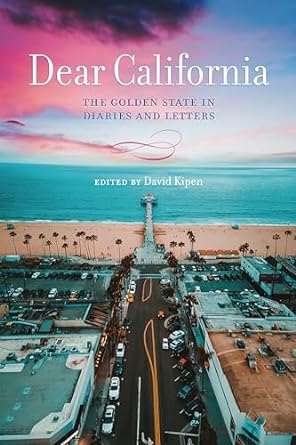
Dear California: The Golden State in Diaries and Letters ~ Edited by David Kipen
Using a date-by-date structure that moves through the calendar year, this book employs California diary and letter excerpts and even a few tweets, blogs and quotes from speeches to catalog nearly 400 years of California history. Following up on the book’s progenitor, Dear Los Angeles, entries range from “The Creation Story of Turtle Island” to a recent Bukowski exhibit at the Huntington Library to a 2021 tweet. Among the book’s nearly 200 contributors are famous voices like John Lennon, Octavia Butler, and Mark Twain, next to dozens of other forgotten voices from yesteryear. As Faulkner declares in the text: “This is a strange and curious place.”
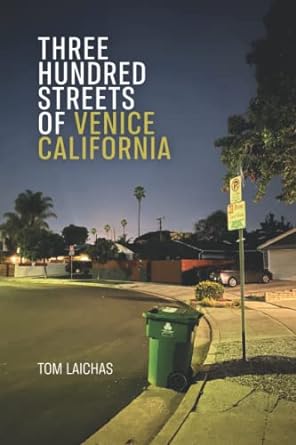
Three Hundred Streets of Venice California ~ By Tom Laichas
Combining cartography, dreamscape, Los Angeles lore, and his own family history, the prose poems in Laichas’s book circle around every intersection in Venice from Centinela to the water, Washington to the Westminster Dog Park. Fans of DJ Waldie’s Holy Land will savor these vignettes. Each piece is based on a different Venice street, such as Horizon Avenue, Jefferson Way, Rose Avenue, and Venice Boulevard, among almost 50 other Venice thoroughfares. The narrative shape-shifts between literal, metaphorical, and surreal from line to line, but true Angelenos will recognize the references and imagery instantly. “There’s an ocean,” Laichas writes. “The Pacific. I live at its edge, my otherselves behind me.”
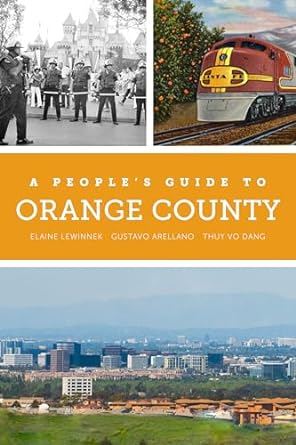
A People’s Guide to Orange County ~ By Elaine Lewinnek, Gustavo Arellano & Thuy Vo Dang
This guidebook is for those who know Orange County is much more than just Disneyland, tract houses, or exclusive beaches. This book aims to feature a deeper, more diverse political history like civil rights heroes, family eateries, labor movements, indigenous resistance, and L.G.B.T.Q. victories. Showcasing murals, strawberry farms, Asian enclaves like Garden Grove and Westminster, the Latino bohemia of Downtown Santa Ana, and the wetlands of Bolsa Chica, the social and environmental histories of O.C. here are extraordinary. Chock full of hidden gems, the authors reveal the lesser-known stories of America’s fifth-most-populous county.
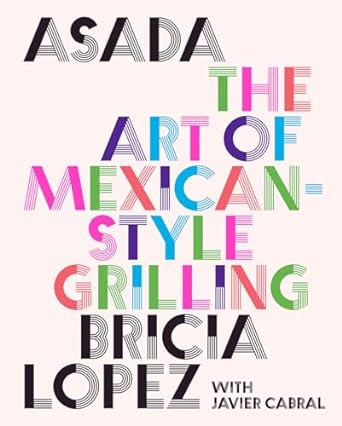
Asada: The Art of Mexican-Style Grilling ~ By Bricia Lopez and Javier Cabral
Why did publishing a handy guide to the great, L.A.-style carne asada take this long? Who knows. But it’s out now, and it’s written by two people who have dedicated their lives to serving and writing about Mexican food culture in Los Angeles. Lopez, with her pioneering Oaxacan restaurant in the heart of Koreatown, Guelaguetza, and Cabral, with his tenure as the late Jonathan Gold’s restaurant scout and editor-in-chief of L.A. TACO for four years. This book walks you through many foolproof recipes to make your own marinades for your favorite cuts of meat, seafood salsas, tortillas, vegetarian side dishes, and even pre-batched cocktails. If carne asada is a way of life for you, this will be your new bible.
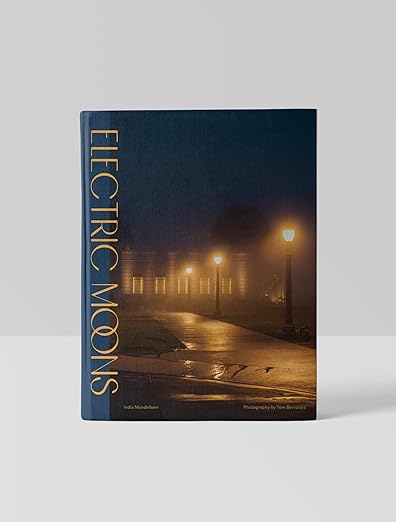
Electric Moons: A Social History of Street Lighting in Los Angeles ~ By India Mandelkern
Who would have ever known that a book on the history of the Los Angeles streetlight would be so fascinating? “Rather than holding it up for scrutiny as an inert object, as if she were painting a still life, or slipping it under the literary equivalent of a microscope, to squint at its tiniest details,” writes Christopher Hawthorne in the book’s foreword, “she instead takes a more active and critical role in analyzing the relationship between the history of this piece of urban design and the political, civic and cultural life of Los Angeles.” Mandelkern calls streetlights “totems of everyday life: unsung local emblems that we tend to overlook.” At the end of the book, she spotlights L.A.’s Top 40 street lights, including the Wilshire Lantern and the Broadway Rose.
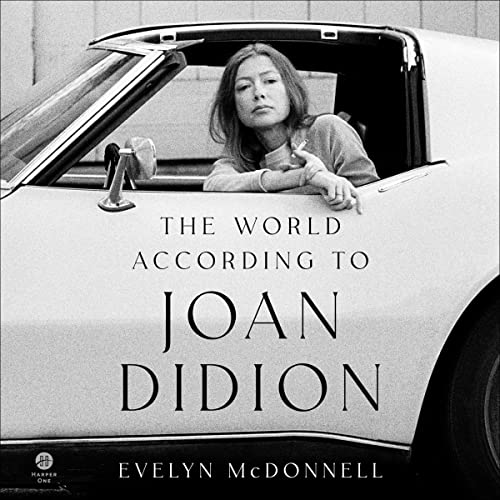
The World According to Joan Didion ~ By Evelyn McDonnell
Rather than a biography, this book explicates the people, places, and time periods that defined the prose of Joan Didion. Moving from Sacramento to New York to Los Angeles to Malibu, then Miami, Hawaii, and back to Manhattan, McDonnell presents a literary map tracing Didion’s legacy from the late 1950s to her emergence as an iconic California writer in the 60s and 70s to her eventual passing in 2021. Combining interviews with Didion’s inner circle and close reading of her books like Slouching Towards Bethlehem and Where I Was From, McDonnell reminds us of why Didion was so beloved in the first place. McDonnell’s aims are somewhat similar to Lynell George’s 2020 book, A Handful of Earth, A Handful of Sky: The World of Octavia E. Butler, because it humanizes Didion and gives readers instructions on how they might become a writer if they work hard enough with the right fortitude like Didion did.
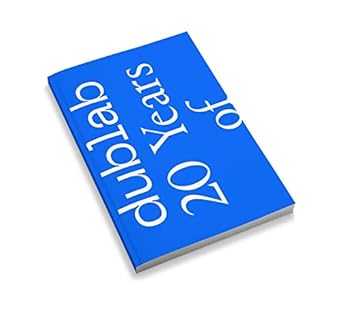
Dublab: Future Roots Radio ~ Edited by Mark “Frosty” McNeil & Jeremiah Chiu
Ever since its founding in 1999, the LA internet radio station dublab has been breaking new ground sonically. The book’s subtitle captures this: “Collapsing Time, Space, and Place on the Internet Airwaves.” As an incubator for DJs and musicians like Ras G, Carlos Nino, Al Jackson, Daedalus, Kutmah, Flying Lotus, Nobody, and Gaslamp Killer, a homebase for record labels like Plug Research, Stonesthrow, and Brainfeeder, and the internet extension of venues like Sketch Pad and The Low End Theory, it’s no exaggeration to say dublab has played a central role in Los Angeles’s musical landscape and even internationally. This book documents this story properly with dozens of interviews, candid photos from the studio, and vivid ephemera like technicolor event flyers, record sleeves, and fantasy album covers. Published by Hat & Beard Press, the book’s aesthetic is glorious, like an issue of Wax Poetics.
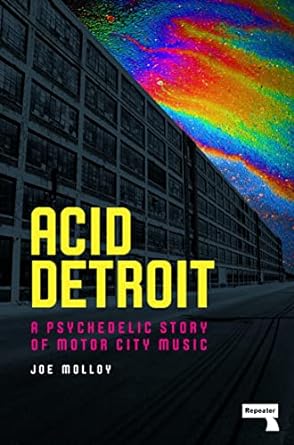
Acid Detroit ~ By Joe Molloy
Molloy crafts an inclusive musical history of Detroit from the postwar period to the present, covering Motown, MC5, Iggy and the Stooges, the White Stripes, J Dilla, and the rise of techno in the Motor City. Frequently discussed Detroit artists like Bob Seger, Eminem, and Kid Rock are briefly noted but the book mostly spotlights musicians like Iggy Pop, the Temptations, Marvin Gaye, and Danny Brown. Surveying the rise and fall of late capitalism as expressed in Detroit music, this is first-rate radical history. The author presents Detroit, “not as a city of crushed dreams, but as a resilient bastion of consistent, cutting-edge American culture.” I found this at Stories in Echo Park.
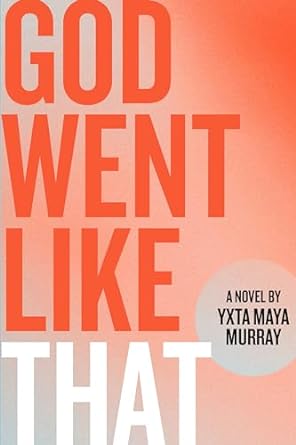
God Went Like That ~ By Yxta Maya Murray
Taking the form of an Environmental Protection Agency report, the award-winning novelist and legal scholar Yxta Maya Murray’s new novel investigates the real-life nuclear reactor meltdowns and accidents that happened in 1959, 1964, and 1968 in the Santa Susana Field Laboratory near Simi Valley. The long-hidden nuclear catastrophe created generations of toxic pollution and radioactive contamination. Murray’s novel uses the federal agent Reyna Rodriguez as a protagonist, uncovering the environmental impact. Rodriguez's assertions in her reports are taken from actual research Murray conducted for the Huntington Library. Her knowledge as a legal scholar combined with her deft fiction writing skills meld here to create a unique, believable novel grounded in science but still engaging as a work of literature.
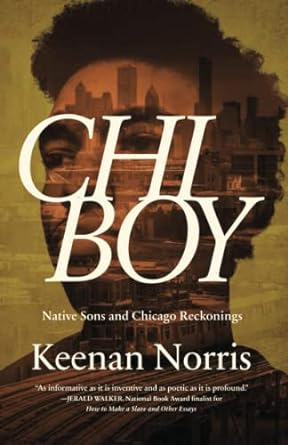
Chi Boy: Native Sons and Chicago Reckonings ~ By Keenan Norris
Keenan Norris is a novelist, journalist, and professor who melds memoir, cultural criticism, and literary history to examine the last century of Chicago. Using the work of Richard Wright as a throughline, Norris also dives deep into the history of his father Butch Norris, who grew up in Chicago following the Great Migration. Cameos in the narrative include Barack Obama, the Black P Stones, Common, and Chief Keef. Eventually, Norris’s father moved to San Bernardino and the author spends part of the time showing the similarities between the disenfranchisement of the Inland Empire to the Windy City. “Wherever we go, there we are,” writes Norris. “Whether in Chicago or any other city, we find ourselves, our frailty, our survival.”
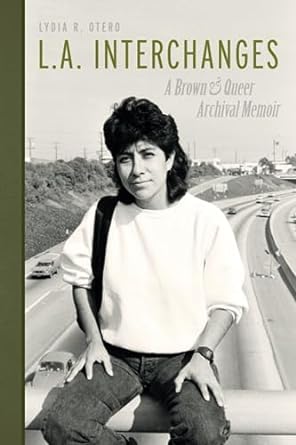
L.A. Interchanges ~ By Lydia R. Otero
Lydia Otero’s journey, as the title suggests, travels from East Los Angeles to Alhambra, West Hollywood, and Venice, as the author plays a major role with groups like Lesbians of Color and Gay and Lesbian Latinos Unidos. Their memoir combines archival storytelling, photographs, and protest flyers to catalog their own rite of passage and the political and cultural landscape of 1980s Los Angeles. Otero was also an electrician who worked on the U.S. Bank Tower, the Metro Rail, and the Universal Citywalk. Covering from the late 1970s to 1998, Otero was in the middle of it all. “My quest to join and build alternative sites that made connecting with Brown queers outside of bars possible,” Otero states, “was motivated by my feminist leanings and knowing that I found women whose politics aligned with mine the ultimate aphrodisiac.”
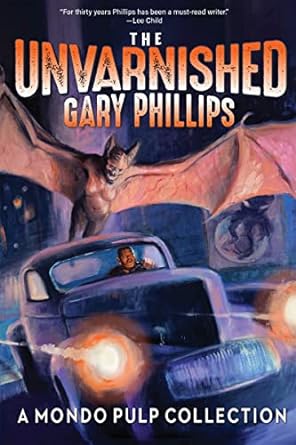
The Unvarnished Gary Phillips ~ By Gary Phillips
Gary Phillips has long been one of the West Coast’s most prolific scribes. The award-winning novelist, editor, and screenwriter has specialized in showing L.A.’s dark side and the lesser-known streets of South Central. Still, this latest book of his short stories merges bizarro, noir, SciFi, and madcap pulp fiction. The 17-story collection ranges “from a centuries-old Aztec vampire, an astral projecting killer, celestial vigilantes, an undercover space ranger, a right-wing specter haunting the ‘hood, and of course, a mad scientist plotting world domination.” These pages are where “grindhouse meets blaxploitation with strong doses of hardcore B movie drive-in fare.” Dedicated to Rod Serling of the Twilight Zone, it’s otherworldly and laugh-out-loud funny.
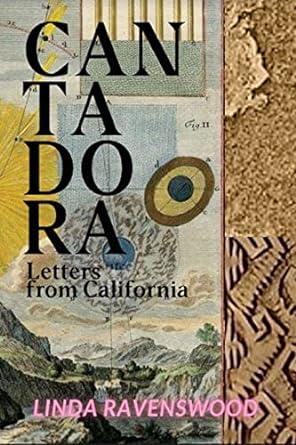
Cantadora—Letters From California ~ By Linda Ravenswood
The Chicana and Jewish American scholar and performance artist Ravenswood presents 44 hybrid texts that read as maps, diary entries, dream fragments, poetic manifestos, and prose poems dedicated to working against the erasure of history. Allison Hedge Coke characterizes it as “being in the world with fixed and shifting perimeters. It speaks to Being Mixed with a luminous medley. It is a ricochet of childhood seasonings.” Ravenswood writes about it all, from the conquest of Mexico by Cortés to a post-it in the pandemic.
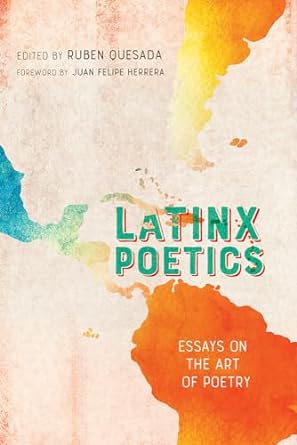
Latinx Poetics: Essays on the Art of Poetry ~ Edited by Ruben Quesada
Spotlighting the cultural experiences found in Latinx poetry, this book of essays goes a long way to show that Latinx culture encompasses people with connections to not just Mexico but the Caribbean, Central, and South America. Moreover, there is no singular voice or common theme in Latinx poetry, instead, there are “fissions of multiple identities, the out/in transcendent channels of word, body, and memory,” as Francisco Aragon states, and “deep examinations, personal stories, senses of a damaged cultural self, and the ‘war’ to reclaim and honor our injured self,” as Blas Falconer writes. The Pomona poet Michael Torres pontificates on being “A Graffiti Artist in Academia,” and Adela Najarro riffs on “How I Came to Identify as a Latina Writer.” The 24 essays here honor the history of Latinx poetry while presenting a spectrum of voices that are creating its future.
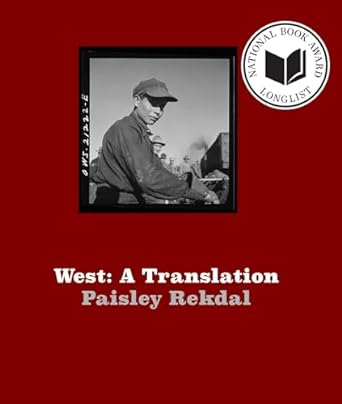
West: A Translation ~ By Paisley Rekdal
Rekdal’s collection of poems and essays commemorates the 150th anniversary of the transcontinental railroad while also looking at the Chinese Exclusion Act. Rekdal was the Utah Poet Laureate for five years. This book covers a lot of territory as a sort of documentary poetry. Every poem in it also has a short essay in the book’s second half, filling in the historical context of mentioned figures like Frederick Law Olmsted, A. Philip Randolph, Frederick Jackson Turner, and Helen Holmes. The essays read as prose poems, and the book folds into itself like Russian dolls. “The bombs, the state historian warns me,” Rekdal writes, “didn’t all go off when they were dropped. Never leave the safety of the road. Truck tire rusting in the salts. When it rains, it pours.”
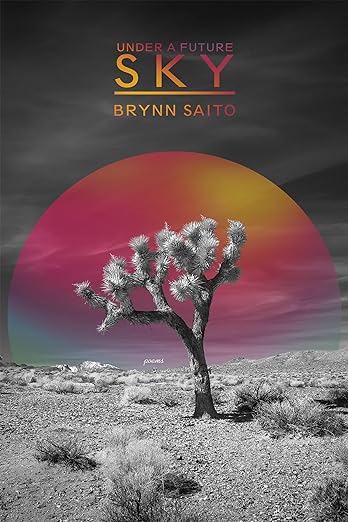
Under A Future Sky ~ By Brynn Saito
Fresno-born poet, professor, and organizer Brynn Saito took a pilgrimage with her father to the Arizona desert prison, where her paternal grandparents met during World War Two. Many of the book’s 27 poems are epistolary, poetic letters addressed to her grandparents, father, mother, sister, and future child while unpacking her grandparents' plight of wartime incarceration and generational trauma. Saito sings about Southwest flora and ancestral memory. Calling out the beauty within California’s Central Valley and the Arizona desert, she beholds rhododendrons, peony buds, sagos, azaleas, and night-blooming lantana–all while “divinating history.”
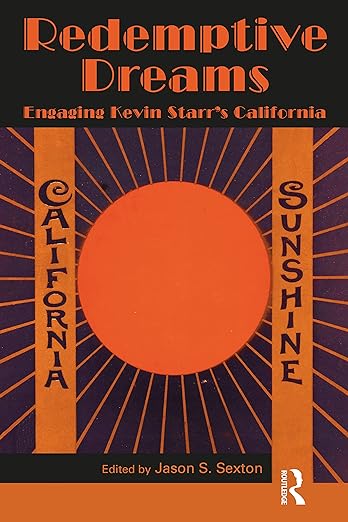
Redemptive Dreams: Engaging Kevin Starr’s California ~ Edited by Jason Sexton
Kevin Starr’s eight-volume Americans and the California Dream series is probably the most ambitious interpretive project about not only California but of any American state. And though Starr died in 2017, he continues to be quoted, cited, and referenced in countless accounts about the Golden State. The nine essays in this collection showcase why Starr matters and how his interdisciplinary American Studies approach to narrative history made his work accessible to everyone, not just academics. Anthea Hartig calls Starr “a public servant and a public historian” in the Foreword. Truly a public intellectual, Starr was almost like a literary Huell Howser writing history for the world at large. This book also includes one of the last interviews with Mike Davis before he died. Though Davis and Starr were sometimes depicted as rival California historians, the two leviathans became good friends. Davis reflects on Starr’s legacy, what he got right, what he missed, and how Starr “really believed that people can be changed by dialog with people who have different or opposing views.”
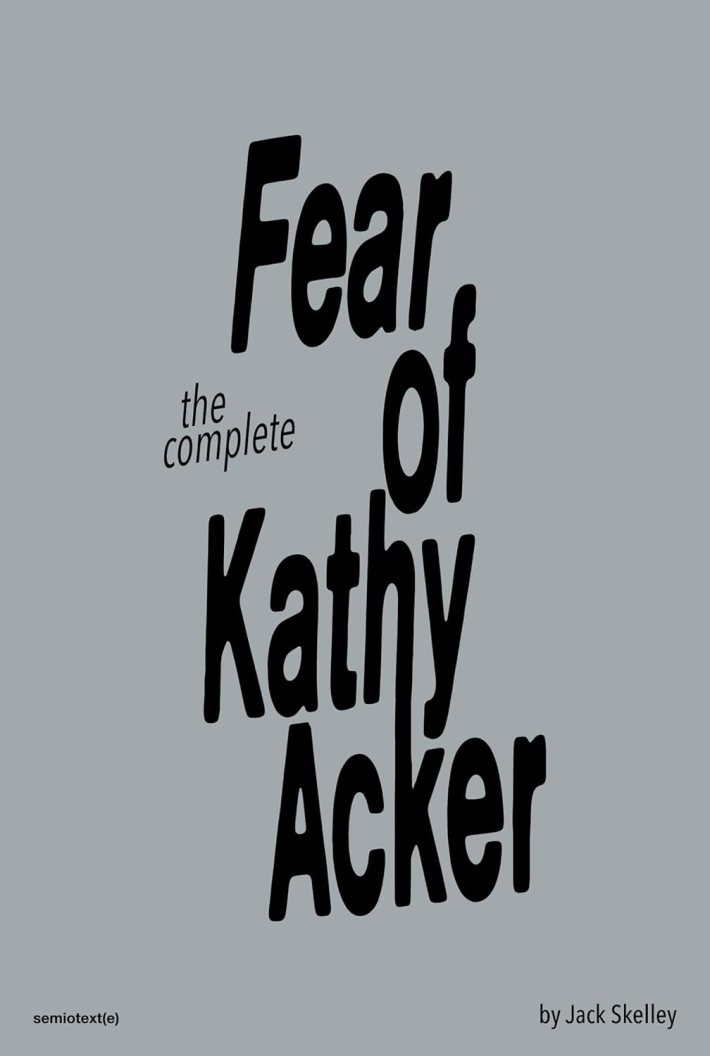
The Complete Fear of Kathy Acker & Interstellar Theme Park: New & Selected Writing ~ By Jack Skelley
2023 was a big year for Jack Skelley with these two books. The poet, journalist, and editor has a 40-year track record dating back to his early days with Beyond Baroque and as a seminal figure in LA’s Performance Art/Punk rock/spoken word movement of the early 1980s. Fear of Kathy Acker is his experimental novel that was published in piecemeal, serial form in mid-1980s chapbooks and magazines. The new version from Semiotext(e) is the first time it’s ever been published in its entirety. Both a homage to Kathy Acker’s cut-up novels and a deep dive into the 1980s LA underground, it reads like Burroughs shopping with Billy Idol. And Interstellar Theme Park collects 40 years of his poems with a lot of new work. Whether it’s his poems connecting the Beach Boys and Charles Manson or meditating on avant-garde cinema, Skelley’s been there and done that poetically: “At the Think Tank for collective amnesia / we gutted the basement and found a tiny time capsule.”
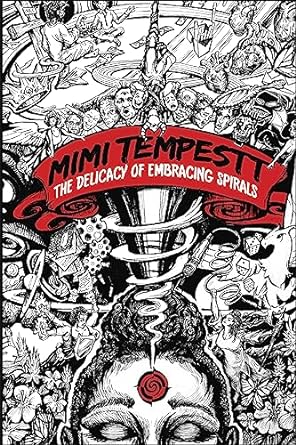
The Delicacy of Embracing Spirals ~ By Mimi Tempestt
Mimi Tempestt wants to know: “what you know about about a L.A. woman?” In particular a Black LA woman. Tempestt’s second book of poems, her first with City Lights, is a tour de force. Starting with reflections on her own personal struggles before spiraling out into larger themes of social and political critique, the poems employ a visual and surreal sensibility that eventually culminates into a poetic play. And though Tempestt is from L.A., she came to rise in the Bay Area’s poetry community with the likes of San Francisco Poet Laureate Tongo Eisen-Martin. “She carries Coleman and Kaufman with her to make a poetry I found too livid to be abject and too vivid to forget,” blurbs Douglas Kearney. “I escaped from los angeles with a skeleton in my suitcase,” Tempestt says.
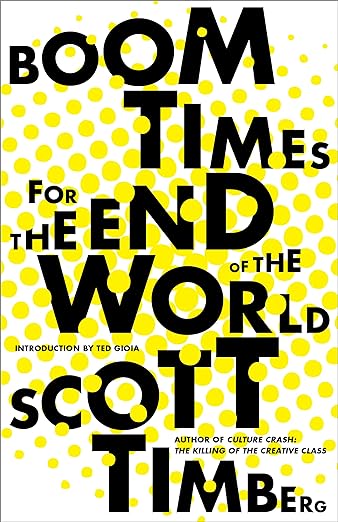
Boom Times For the End of the World ~ By Scott Timberg
For over two decades, Scott Timberg was one of Los Angeles’s most prolific journalists championing artists, musicians, writers, architects and filmmakers. The former reporter for the LA Weekly and Los Angeles Times committed suicide in December 2019, just months before the pandemic. The 26 essays in this posthumous collection showcase his prescient eye, omnivorous mind and the deep longing behind his words. Timberg’s 2015 viral essay “Leaving Los Angeles,” is included here and the questions it raises about economic and cultural shifts are more relevant now than ever. Timberg also co-edited a book about Los Angeles in the early 2000s called The Misread City. “It’s human nature to try to make meaning out of life, to build narrative shapes out of events and images,” writes Timberg. “That may be, in the end, what creativity is about.”
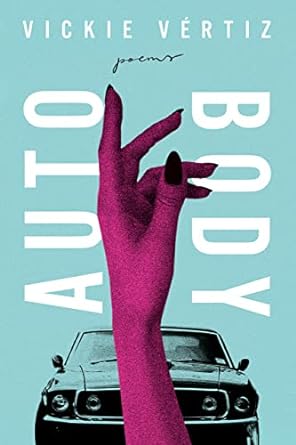
Auto/Body By Vickie Vertiz
“I’m a bad bitch of high gloss / and matte juxtaposition / My body is the decolonized, sustainable thing,” asserts Vickie Vertiz in her poem “‘85 Chevy El Camino.” Vertiz grew up in the industrial streets of Southeast L.A. County near the Los Angeles River and auto body shops. In her second book, she examines cars and their maintenance poetically as a vehicle to examine her life experiences, what’s underneath the hood, and if it’s firing on all cylinders. Vertiz studied with Juan Felipe Herrera, Mike Davis, Allison Hedge Coke, and Susan Straight at UC Riverside a decade ago in their MFA Program and she makes her mentors proud with poems that work in the past, present and future: “Is it talking dirty if you’re just listening? What you see in the picture is me riding shotgun.”

I’d Rather Be Lightning ~ By Nancy Lynée Woo
The Long Beach based eco-poet Nancy Lynée Woo is such a skilled bard that she can make a poem about the climate crisis beautiful. Humanizing deep ecology and ecofeminism into playful humorous poems that still manage to evoke hope, Woo waxes poetic on wetlands, rain storms, and having a good relationship with her third eye. These poems meld youthful optimism with a sober worldly understanding. Moving into the realm of magic, she reminds us she’d “rather be lightning.”
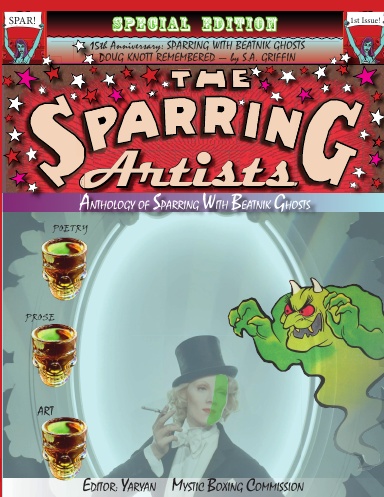
The Sparring Artists (Anthology of Sparring With Beatnik Ghosts) ~ Edited By Daniel Yaryan
You’d be hard pressed to find anyone who’s done more to unite West Coast Poetry than Daniel Yaryan. His "Sparring with Beatnik Ghosts" readings have included over 90 shows between the Bay Area and LA. The Sparring Artists book edited by Yaryan celebrates the 15th Anniversary of the celebrated live poetry series with 125 contributors like Michael C. Ford, Lewis MacAdams, and Pam Ward. Bridging the Beat Generation poets with the 21st Century, this collection screams punk rock, spoken word, jazz, hip hop, surreal, avant-garde, it’s all in here.
If you made it this far, I encourage you to share books with your friends and loved ones. Reading builds empathy, encourages critical thinking, and helps us remember what it means to be human. Thank you for reading, and happy new year! I wish you a great 2024 and beyond!
Stay in touch
Sign up for our free newsletter
More from L.A. TACO
An Update On Our Membership Drive: Some Bad News, and Good News
Some bad news, and some good news on our pledge to survive and stay sustainable.
Where To Eat This Weekend: Bulgogi Pupusas, Hemp Seed Guacamole, ‘Sticky Rice Sticks,’ and Korean Street Food In Venice
Plus an Roman chef veteran in a Hollywood apartment, chocolate Cuba Libres, Uzbeki plov with lazer rice, and cochinita melts in a Silver Lake yard. Here are the best things to eat around Los Angeles (and San Juan Capistrano!) this weekend.
How Your Business Can Benefit From Sponsoring L.A. TACO
When your company sponsors L.A. TACO, you receive a variety of quick and cost-effective benefits for far less than what we price our traditional advertisements and social media mentions at.
Juárez-Style Burritos Have Arrived in Southern California, And They are Already Selling Out In Less than An Hour
The month-old strip mall taquería in Anaheim make all their flour tortillas from scratch using both lard and butter, resulting in an extremely tender vehicle for their juicy guisados like carne en su jugo, carne deshebrada, chile colorado, chile relleno, and chicharrón. Every tortilla is cooked to order, too.
